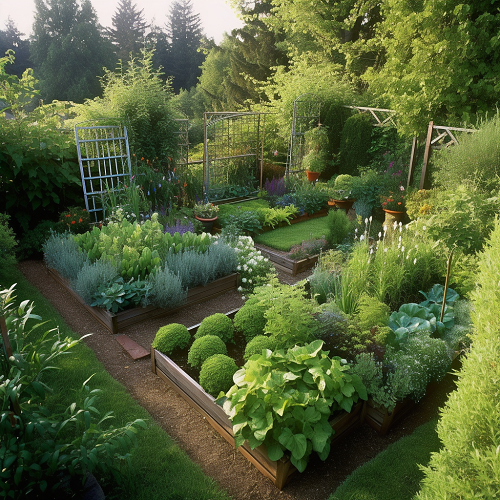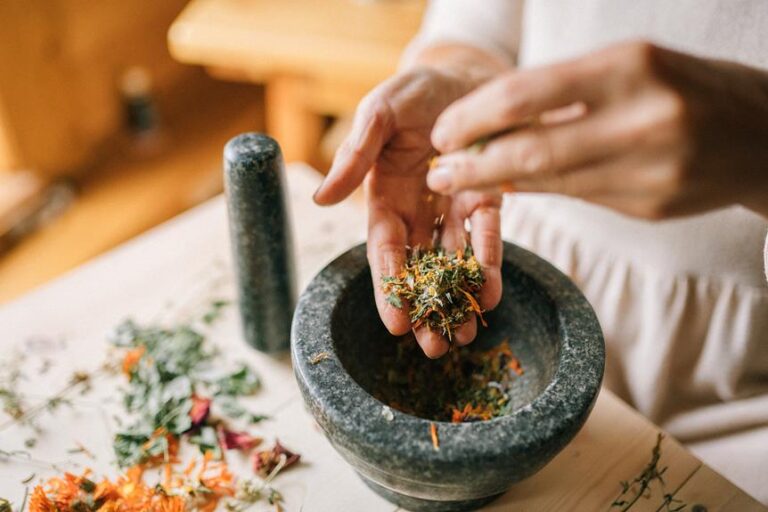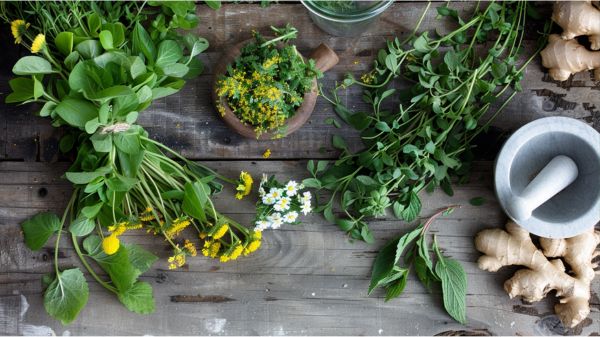Sustainable Plant Medicine: The Case for Green Farming
Do you want to make a positive impact on the environment while nurturing the healing power of plants? Look no further. In this article, we unveil the secrets of eco-friendly and sustainable plant medicine farming practices that can revolutionize the world of plant medicine.
Discover how organic farming methods, biodiversity conservation, and eco-friendly pest management techniques can ensure the longevity and potency of medicinal herbs. Get ready to join the movement towards green farming and become a steward of nature’s healing gifts.
Organic Farming Methods for Herbs
If you want to cultivate herbs using organic farming methods, start by choosing a number of suitable varieties for your growing conditions.
When it comes to organic farming, soil health is crucial for the success of your herb cultivation. Ensure that your soil is rich in organic matter and has a balanced pH level. Conduct a soil test to determine its nutrient content and make any necessary amendments to optimize soil fertility.
Additionally, implementing proper cultivation techniques is essential for organic herb farming. Use natural fertilizers, such as compost or organic manure, to provide essential nutrients to your herbs.
Practice crop rotation to prevent soil depletion and control pests and diseases naturally, using techniques like companion planting and biological controls.
Importance of Biodiversity in Herbal Farming
To sustain the success of your organic herb farming, prioritize biodiversity by incorporating a variety of plant species into your cultivation practices. Ecological balance in herbal farming is crucial for the preservation of traditional herbal knowledge and the long-term health of your farm.
Biodiversity refers to the variety of plant species present in an ecosystem, and it plays a vital role in maintaining the ecological balance. By cultivating a diverse range of plants, you create a habitat that supports beneficial insects, birds, and other wildlife, which contribute to pest control and pollination.
Additionally, different plant species provide various medicinal properties, allowing you to expand your product range and meet the diverse needs of your customers. By embracing biodiversity, you not only contribute to the preservation of traditional herbal knowledge but also ensure the sustainability and resilience of your farm.
Conservation Practices for Herbal Plants
Incorporate eco-friendly practices to preserve the vitality of your herbal plants. Conserving herbal plants is essential for maintaining their long-term sustainability. One crucial aspect of conservation is seed preservation.
By collecting and storing seeds from your herbal plants, you can ensure their genetic diversity and future propagation. Implementing proper seed storage techniques, such as using a cool and dry environment, will help maintain seed viability over time.
Additionally, soil regeneration plays a vital role in sustaining herbal plants. Practice organic farming methods, such as composting and crop rotation, to enhance soil fertility and structure. Avoid excessive use of synthetic fertilizers and pesticides that can harm beneficial soil organisms.
Sustainable Harvesting Techniques for Medicinal Herbs
To ensure the sustainable harvest of medicinal herbs, utilize proper techniques for maximizing yield and minimizing environmental impact. Ethical sourcing of medicinal herbs and regenerative farming practices are crucial in achieving this goal.
When it comes to harvesting medicinal herbs, it’s important to consider the plant’s life cycle and growth patterns. Harvesting should be done at the appropriate time to ensure the highest potency and efficacy of the herbs. Additionally, implementing sustainable harvesting techniques such as selective harvesting and rotation can help maintain the health of the plant population and prevent overexploitation.
It’s also essential to prioritize ethical sourcing, ensuring that herbs are obtained from reputable sources that prioritize fair trade and environmental stewardship.
Eco-Friendly Pest and Weed Management in Herbal Farming
You can effectively manage pests and weeds in herbal farming by regularly implementing eco-friendly methods. Here are five strategies for integrated pest management and natural weed control:
- Crop rotation: Rotate your herbal crops to disrupt pests’ lifecycles and reduce the risk of infestation.
- Companion planting: Interplanting herbs with pest-repellent plants can deter pests and reduce the need for chemical pesticides.
- Biological controls: Introduce beneficial insects, such as ladybugs and lacewings, to naturally control pest populations.
- Mulching: Apply organic mulch around your herbal plants to suppress weed growth and conserve soil moisture.
- Hand weeding: Regularly remove weeds by hand to prevent them from competing with your herbal plants for resources.
By implementing these eco-friendly methods, you can effectively manage pests and weeds in your herbal farm while minimizing the use of harmful chemicals.
This approach promotes a healthier ecosystem and ensures the sustainability of your plant medicine practices.
Conclusion
In conclusion, adopting green farming practices for the cultivation of medicinal herbs is crucial for sustaining plant medicine. By employing organic farming methods, promoting biodiversity, implementing conservation practices, and adopting sustainable harvesting techniques, we can ensure the longevity of these valuable plants.
Additionally, eco-friendly pest and weed management techniques play a vital role in maintaining the health and productivity of herbal farms. Did you know that implementing eco-friendly practices can reduce pesticide use by up to 85%?
Together, we can protect the environment and preserve the healing power of plant medicine.






